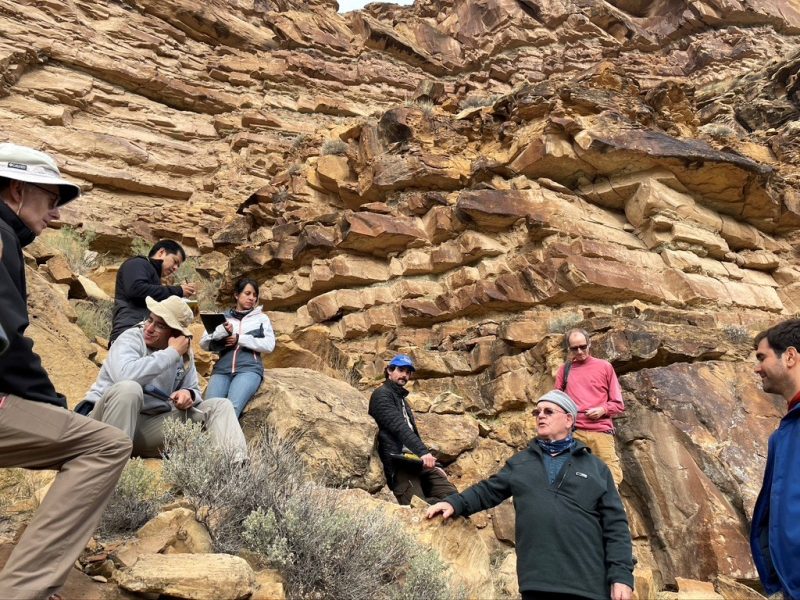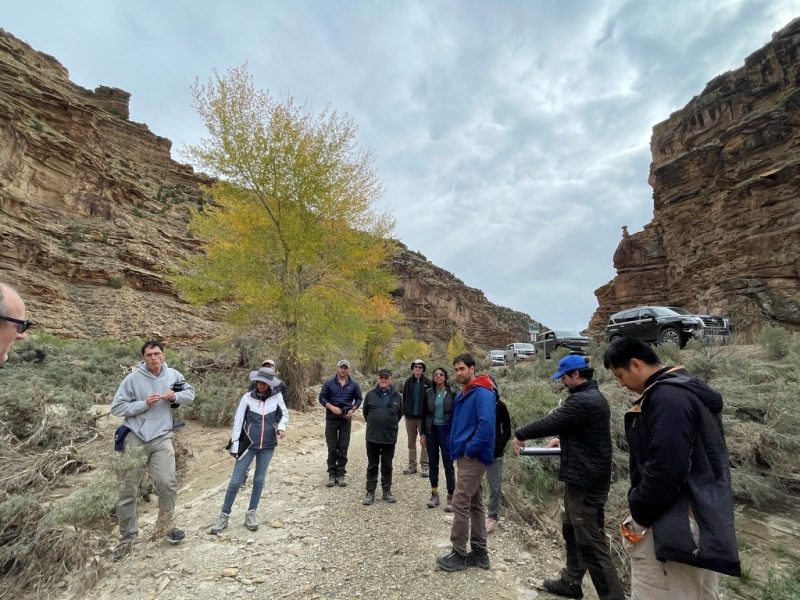GEO 383: Dynamic Stratigraphy Field Seminar
December 5, 2022
|
|
|

Despite the travel hurdles, we renewed the exciting tradition of geoscience field seminars (Argentina 2014, Ecuador 2017, Romania 2018) with a field trip in Fall 2021. We focused on the North American Cordilleran foreland basin along a west to east transect from Salt Lake City, Utah, to Laramie, Wyoming, and a return route through the Book Cliffs of Utah. A group of 10 graduate students led by Research Scientist Cornel Olariu, Professor Emeritus Ron Steel, and Professor Brian Horton discussed sedimentologic and stratigraphic responses at the transition from Sevier to Laramide style tectonic deformation. Our observations near Rock Springs, Wyoming, provided a window into the criteria used for recognizing patterns of Laramide deformation. In contrast to typical unconformities, we identified stratigraphic trends involving sub-basin thickening versus crustal thinning, nicely expressed around the Rock Springs and Rawlins uplift areas. The biostratigraphic chronology for the regional geological transect provides resolution of 300-500 thousand years.
Some spectacular classic localities included Cretaceous-Paleogene growth structures within the Echo Canyon Conglomerate, tidal shoreline deposits of the Blair Formation, and fluvial deposits of Ericsson Formation around the Rock Springs uplift. Marine to nonmarine regressive-transgressive cycles of the Cretaceous Western Interior Seaway strengthened student understanding of the temporal and spatial scales of sedimentary processes and possible allogenic controls. Lacustrine deposits within the Paleogene Uinta Basin provided a sharp stratigraphic contrast with the marine basin fill of the Western Interior Seaway. Students attending the field seminar emphasized the importance of fieldtrips to their educational journey with Jackson School of Geosciences. Rawan Alasad: “I especially enjoyed listening to student presentations in the field and having engaging and lively discussions afterwards. It was a great field trip, and I highly recommend it to students with broad interest in sedimentary geology, basin analysis and tectonics.”
Cornel Olariu,
Research Scientist
Back to the Newsletter

